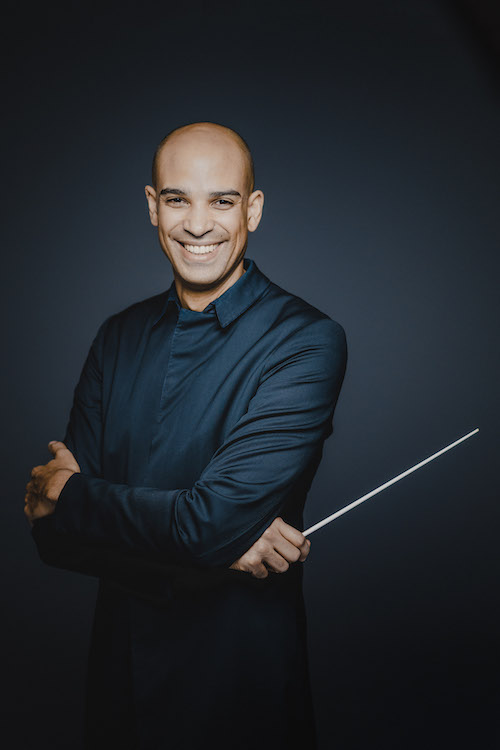Edusei makes worthy DSO debut with glimmering Ravel, Coleridge-Taylor rarity

Kevin John Edusei is a new face for most local concertgoers. But soon he will be a familiar one: last month, the Fort Worth Symphony named him their new principal guest conductor, effective next season.
Yet on Friday night, the German-Ghanaian conductor made his Dallas Symphony Orchestra debut, leading a program of familiar favorites by Maurice Ravel with a somewhat incongruous rarity, Samuel Coleridge-Taylor’s Violin Concerto.
The Dallas Symphony seemed to struggle with French music under Jaap van Zweden. Since Fabio Luisi took the music director helm, they have sounded more comfortable with this repertoire, even under guest conductors. Last night’s performance was for the most part no exception.
Ravel’s Alborada del gracioso got off to a slightly rough start Friday with some ensemble issues. Despite the early troubles, the orchestra soon settled in, and this Alborada performamce offered a lively and graceful reading. The tall, angular Edusei has a distinctive but not overly theatrical podium presence, with a clear downbeat. His restrained approach produced generally pleasing results from the orchestra.
The other two Ravel pieces on the program seemed more consistent and successful, with the Suite No. 2 from Daphnis et Chloé at times spellbinding. The flute solo in Daphnis is one of the moments by which orchestral flutists are judged, and principal David Buck’s solo glimmered gorgeously. The orchestra’s range of colors and carefully shaped phrases were thrilling.
Boléro was the inevitable finale, a piece which reliably draws audiences (the hall appeared to be nearly full to its two-thirds Covid-era capacity). Perhaps they are there for the mesmeric snare drum. If so, principal percussionist George Nickson’s performance must have delighted them. His absolute precision in repeating the same figure for fifteen straight minutes, 169 times, increasing dynamic almost imperceptibly from the most delicate pianissimo to the most vigorous fortissimo, was a remarkable feat.
The most fascinating way to view Boléro, though, may be as an exercise in timbres. There has been recent historical speculation that the repetition in the piece may have been a result of Ravel’s incipient dementia. Perhaps so, but that very repetitiveness allows us as listeners to focus solely on tonal colors, as Ravel first introduces, then combines and recombines the usual complement of winds and brass, plus some less commonly heard instruments —the oboe d’amore, and saxophones.
The DSO’s performance Friday night had a few small glitches—a couple of dropped notes in the winds, some messiness in the first violins. On the whole, though, it succeeded, by achieving that trance-like mood which is so common in rock, but seldom heard in orchestral music.
The sole not-Ravel piece on the program, Samuel Coleridge-Taylor’s Violin Concerto in G minor, was another animal entirely.
Coleridge-Taylor was a biracial Englishman who was simultaneously fêted for his musical gifts and marginalized because of his African heritage. His best-known piece, a cantata called Hiawatha’s Wedding Feast, was positively evaluated by none other than Sir Arthur Sullivan, who wrote that he was “impressed” by the young composer’s work, and it garnered Coleridge-Taylor considerable fame.
Coleridge-Taylor died in 1912, when he was just 37. His early stardom dimmed considerably after his death, but he has experienced a resurgence of interest in the past few years.
The Violin Concerto, his final major work, is Romantic in style, with listeners comparing it variously to Elgar or Vaughan-Williams. While the themes are largely forgettable, it has merit as a late Romantic showpiece for violin that isn’t an over-played warhorse.
Violinist Elena Urioste has technique and lyricism aplenty, qualities needed for this concerto. Double stopped passages and showy runs dot the faster first and third movements, while the slow second movement shows off right-hand technique and musicality in long, languorous lines.
However, Urioste’s light sound doesn’t fill the hall; while the orchestra seldom covered her, some of that may be a function of the rather sparse orchestration of the piece itself. I suspect that folks sitting in the balconies may have had to strain to hear her.
The program will be repeated 7:30 p.m. Saturday and 3 p.m. Sunday. dallassymphony.org
